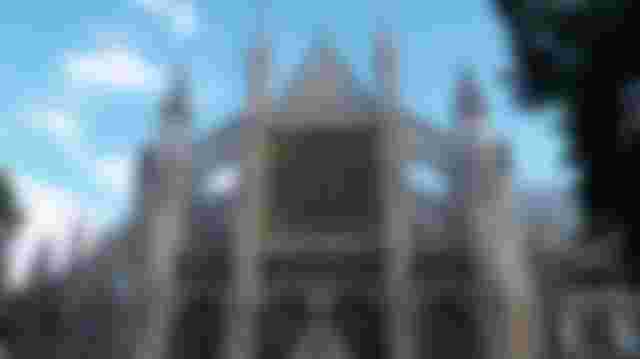Norman London

The first object of the Normans in a subjugated country was to make everything secure; so they put the city walls in thorough repair, and built the Tower.
(For convenience I have grouped together Plantagenet, Lancastrian, and Yorkist London as Pre-Tudor, linking it to Norman; and under this heading can be classed the Abbey, Westminster Hill, Guildhall, Crosby Hall, and some churches, which, together with the Tower, are dealt with elsewhere.)
In time arose Bridewell, where the kings held their court, Montfichet on the Thames bank, and Baynard's Castle - palaces in name, but of impregnable solidity.
Their churches were so substantially built, that in case of insurrection they could be used as fortresses.
St. John's Chapel is pre-eminent as a type of their architecture, a gem of its kind, with its apse and twelve massive pillars united by semi-circular arches.
St. Bartholemew the Great in West Smithfield is second only to St. John's.
Then there is the famous Temple Church with its curious "Round," built in 1185.
Ethelburga, Bishopsgate Street, identified with the anti-ritual crusade of that staunch Protestant, Mr. Kensit, retains some early pre-Tudor masonry, of which St. Helen's, not far away, also boasts some fragments.
St. Olave's, at the corner of Hart Street and Seething Lane, is a medley of Norman and later work.
St. John's Gate, Clerkenwell (all that is left of the Monastery of the Knights of St. John of Jerusalem), is a relic of Norman London.
Old St. Pancras Church, over whose burial-ground the Midland trains unceasingly thunder, shows distinct Norman origin.
St. Margaret's, Westminster, retains bits of the older Norman edifice.
In the Abbey we have early Norman in the chapel of the Pyx, and late Norman in St. Catherine's Chapel, and in the Collegiate School remains of Pre-Tudor work.
There are several Norman crypts in London; one at Westminster beneath the Chapter House, restored and known as the Confessor's Chapel, with walls seventeen feet thick, dating back to the time of the Conqueror; another at Guildhall, in perfect preservation, and accessible to all; and there is an under-chapel of great antiquity and interest at Lambeth Palace.
Of the domestic architecture that characterized the long period from William the Conqueror to Henry VII there are no vestiges.
The mansions of the rich and influential were, with few exceptions, fortifications in disguise, built solidly with no attempt at external adornment; but the ordinary citizens' houses were of timber and plaster, and, with their small casements and quaint gables, looked picturesque enough.
In those troublous times when no one felt secure of either life or property, London must have been rather a dismal place to live in.
There was a repelling grimness about it to which joyous spirits like Chaucer could never get quite reconciled; there were too many evidences of despotism and military force; and gloomy-looking castles with battlemented towers frowned on every side.
Yet Londoners had the consolation of lovely country surroundings.
Kings might come and kings might go, one dynasty fall and another rise; but the citizens, forgetting for the time whether the white rose of York or the red bloom of Lancaster was the emblem of rule, could always go a-hawking or a-hunting in verdant fields or bosky woods, or stroll to some clear stream hard by, and fill their baskets with speckled trout.
(From Imperial London, by Arthur Henry Beavan, 1901)
